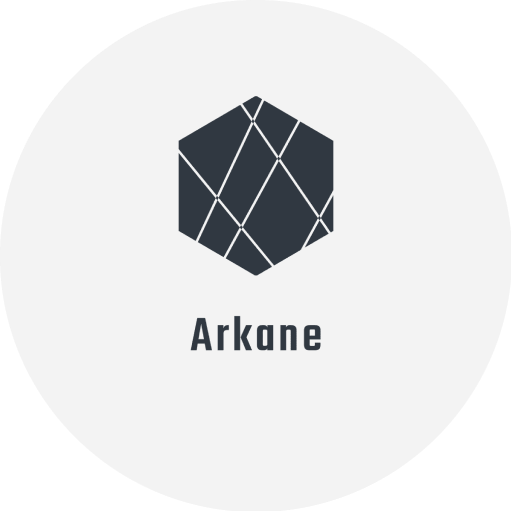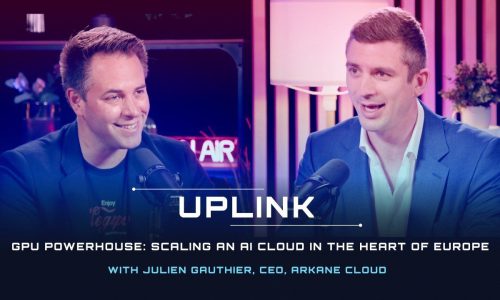
The Role of Nvidia H100 in Scientific Computing

Introduction to Nvidia H100 and Its Significance in Scientific Computing
The advent of the Nvidia H100 represents a significant milestone in the evolution of scientific computing, marking a transition towards more powerful and efficient processing capabilities. The H100, a product of Nvidia’s persistent innovation, embodies a leap in technology that is reshaping the landscape of High-Performance Computing (HPC) and Artificial Intelligence (AI).
One of the most salient features of the H100 is its ability to handle enormous data sets with unparalleled speed and accuracy. This capability is critical in domains such as weather prediction, drug discovery, and the development of large language models (LLMs) like OpenAI’s GPT-3 and GPT-4. The H100 accelerates the training of these LLMs up to 60 times faster than CPUs, a feat achieved through mixed-precision training. This technique combines high-precision floating-point arithmetic with lower-precision arithmetic, reducing memory requirements and enhancing computation speed.
The prowess of the H100 in parallel processing further cements its role in scientific computing. GPUs, by design, excel at parallel processing, which is essential for handling HPC and AI workloads. This method divides a task into smaller sub-tasks executed simultaneously, enabling GPUs to perform complex calculations much faster than traditional CPUs. The ability to manage parallel processing efficiently is particularly advantageous for AI workloads, where deep learning algorithms necessitate the processing of large data volumes.
At the core of the H100’s performance are its GPU compute cores, known as Streaming Multiprocessors (SMs). Each SM contains several CUDA cores, responsible for executing instructions in parallel, significantly enhancing the GPU’s processing power. The H100, with its 16,896 CUDA cores and 528 Tensor Cores per GPU, is capable of performing tens of teraflops of operations, both in single and double precision. Complementing this is the H100’s unique memory architecture, featuring High Bandwidth Memory (HBM), which delivers high bandwidth, low latency, and high-capacity memory, ideally suited for HPC and AI workloads.
Furthermore, the H100’s Tensor Cores accelerate AI workloads, especially deep learning. These cores are designed for mixed-precision matrix multiplication, providing up to 20 times faster performance than traditional FP32-based matrix multiplication. This acceleration enables faster and more accurate training of deep learning models. Complementing this capability is the NVLink technology, a multi-GPU solution that allows multiple GPUs to collaborate in parallel, solving complex HPC and AI workloads. NVLink provides a high-bandwidth, low-latency connection between GPUs, enhancing data sharing and parallel processing capabilities.
Technological Advancements of Nvidia H100
Advanced Core Architecture
The Nvidia H100, with its ground-breaking core architecture, signifies a new era in scientific computing. At its heart, the H100 features an astonishing 80 billion transistors, leveraging the industry-leading 4-nanometer manufacturing process. This miniaturization not only enhances computational density but also propels efficiency, allowing more calculations per watt of power used. This advancement is crucial in an era where energy efficiency and computational power are paramount in scientific advancements.
Transformer Engine and AI Acceleration
A pivotal innovation in the H100 is the Transformer Engine, designed explicitly for accelerating machine learning technologies, particularly those that underpin large language models (LLMs) like GPT-3 and GPT-4. This engine is a game-changer in AI training and inference, providing up to 30 times faster AI inference for LLMs compared to previous generations. Such acceleration is vital for developing complex AI models that can simulate human-like text generation, offering vast potential for scientific fields reliant on data interpretation and natural language processing.
Enhanced Performance for Scientific Applications
The H100 marks a substantial leap in performance for scientific computing applications. It triples the floating-point operations per second (FLOPS) of double-precision Tensor Cores, delivering a massive 60 teraflops of FP64 computing for HPC. This increase is significant for scientific fields where high precision and vast computational resources are necessary, such as in climate modeling, astrophysics, and molecular dynamics. The ability to process large-scale simulations and models more efficiently opens new horizons for researchers, enabling them to explore more complex systems and phenomena with greater accuracy.
Accelerated Data Analytics
In the realm of data analytics, which forms the backbone of modern scientific research, the H100 offers unparalleled performance. The GPU’s architecture, combined with its 3 terabytes per second memory bandwidth, allows for handling massive datasets that are often scattered across multiple servers. This capability is crucial for AI application development, where large-scale data analysis and processing form the bulk of the workload. The H100’s ability to tackle these datasets efficiently not only speeds up the analytics process but also ensures that insights are derived faster, aiding in quicker decision-making and hypothesis testing in scientific research.
Nvidia H100’s Role in Enhancing Supercomputer Performance
The Nvidia H100, as part of the NVIDIA HGX AI supercomputing platform, marks a significant advancement in the field of supercomputing, especially in AI, simulation, and data analytics. This supercomputing platform, purpose-built for AI and complex simulations, integrates multiple GPUs with extremely fast interconnections and a fully accelerated software stack. Such an architecture is essential to manage and process massive datasets and complex simulations, which are typical in scientific research and AI development. The synergy of NVIDIA GPUs, NVLink, NVIDIA networking, and optimized software stacks provides the highest application performance, significantly reducing the time to insights for complex scientific problems.
The unmatched end-to-end accelerated computing capability of NVIDIA HGX H100 forms the world’s most powerful server configurations. It combines up to eight H100 Tensor Core GPUs with high-speed interconnects, delivering up to 640 gigabytes of GPU memory and 24 terabytes per second of aggregate memory bandwidth. This configuration results in a staggering 32 petaFLOPS of performance, creating an accelerated scale-up server platform for AI and HPC unmatched in the industry. The HGX H100 also includes advanced networking options at speeds up to 400 Gb/s, utilizing NVIDIA Quantum-2 InfiniBand and Spectrum-X™ Ethernet. These features provide the highest AI performance and also incorporate NVIDIA® BlueField®-3 DPUs for enhanced cloud networking, storage, security, and GPU compute elasticity in AI clouds.
In the realm of deep learning training, the H100 GPU demonstrates remarkable performance and scalability. For instance, it offers up to four times higher AI training on GPT-3, a testament to its efficiency in handling large-scale AI models. The combination of fourth-generation NVIDIA NVLink, NVLink Switch System, PCIe Gen5, and Magnum IO™ software enables efficient scalability from small enterprises to extensive, unified GPU clusters. This infrastructure makes the HGX H100 the most powerful end-to-end AI and HPC data center platform, capable of managing the intensive computational demands of modern AI training and simulation workloads.
Furthermore, the H100 GPU excels in deep learning inference, offering up to 30 times higher AI inference performance on the largest models. For example, in the Megatron chatbot inference with 530 billion parameters, the H100 cluster showcased exceptional performance. The H100’s capability to process such massive models with high efficiency underscores its role in advancing AI research and development, particularly in fields that rely on real-time deep learning inference for complex and large-scale models .
Practical Applications in Various Scientific Fields
The Nvidia H100 GPU has ushered in a new era of possibilities across diverse scientific fields, with applications ranging from healthcare to robotics, significantly impacting research methodologies and outcomes.
Enhancing Research in Healthcare
In the realm of healthcare, the H100 GPU is revolutionizing various aspects, from drug discovery to genomics and medical imaging. Its accelerated computing capabilities enable researchers to virtually model millions of molecules and screen hundreds of potential drugs simultaneously. This ability not only reduces costs but also speeds up the time to solution, making the drug discovery process more efficient and effective.
The field of genomics, which requires immense computational power to analyze and interpret complex genetic data, also benefits greatly from the H100 GPU. Its advanced computing power and speed facilitate more in-depth genomic studies, helping to identify rare diseases and advance the journey to precision medicine.
In medical imaging, AI-powered tools enhanced by the H100 GPU act as an additional set of “eyes” for clinicians. These tools aid in quickly detecting and measuring anomalies, thereby improving diagnostics, enhancing image quality, and optimizing clinical workflows.
Impact on Robotics and Data Science
The H100 GPU’s new DPX instructions provide accelerated dynamic programming, crucial in robotics for algorithms like the Floyd-Warshall algorithm. This algorithm is used to find optimal routes for autonomous robot fleets in dynamic environments such as warehouses. Such advancements in dynamic programming algorithms can lead to dramatically faster times-to-solution in logistics routing optimizations, contributing significantly to the efficiency and efficacy of robotics applications.
Advancements in Cardiovascular Medicine
A team from Stanford University has leveraged the power of AI, driven by the capabilities of the H100 GPU, to transform cardiovascular healthcare. By utilizing physics-informed machine learning surrogate models, researchers are generating accurate, patient-specific blood flow visualizations. These visualizations provide a non-invasive window into cardiac studies, crucial for evaluating coronary artery aneurysms, pioneering new surgical methods for congenital heart disease, and enhancing medical device efficacy. Such applications have enormous potential in advancing cardiovascular medicine and offer innovative methods for combating the leading cause of death in the US.
The Nvidia H100 GPU is thus playing a pivotal role in advancing scientific research and applications across various domains. Its capabilities in healthcare, robotics, and cardiovascular medicine demonstrate its transformative impact, enabling more efficient, accurate, and innovative approaches to solving complex scientific challenges.
Virtualization and Data Security: A New Frontier
The Nvidia H100 GPU introduces groundbreaking advancements in virtualization and data security, reshaping the landscape of confidential computing and data protection.
Enhancing Security in Virtualized Environments
Hardware virtualization on the H100 GPU effectively isolates workloads in virtual machines (VMs) from both the physical hardware and each other. This feature is particularly crucial in multi-tenant environments where improved security is vital. Traditional security measures focused on data-in-motion and data-at-rest, leaving data-in-use vulnerable. Nvidia’s introduction of confidential computing addresses this gap, offering robust protection for data and code during processing. This innovation is vital in scenarios where AI training or inference involves sensitive information, such as personally identifiable information (PII) or enterprise secrets.
Confidential Computing with Hardware Virtualization
Nvidia has pioneered confidential computing using hardware virtualization in the H100 GPU. This approach involves performing computation in a hardware-based, attested trusted execution environment (TEE). The H100’s TEE, anchored in an on-die hardware root of trust (RoT), ensures the integrity and confidentiality of code and data. It establishes a chain of trust through a secure and measured boot sequence, secure connection protocols, and the generation of a cryptographically signed attestation report. This mechanism allows users to validate the security of the computing environment before proceeding, ensuring that data remains protected against unauthorized access.
Comprehensive Security Across Hardware, Firmware, and Software
Nvidia has continuously enhanced the security and integrity of its GPUs, with the Hopper architecture bringing significant improvements. The H100 GPU incorporates encrypted firmware, firmware revocation, fault injection countermeasures, and a measured/attested boot. These features form a comprehensive confidential computing solution, safeguarding both code and data. The CUDA 12.2 Update 1 release has made the H100 ready to run confidential computing workloads, marking it as the first GPU capable of such advanced security measures.
Operating H100 GPUs in Confidential Computing Mode
The H100 GPU operates in confidential computing mode with CPUs supporting confidential VMs (CVMs). This setup creates a TEE that extends to the GPU, effectively blocking the GPU from directly accessing the CVM memory. The NVIDIA driver, within the CPU TEE, collaborates with the GPU hardware to securely transfer data to and from GPU memory. This process involves encrypted bounce buffers and signed command buffers and CUDA kernels, ensuring that running CUDA applications in CC-On mode is as seamless as in standard mode. The security protocols are managed transparently, providing a secure and efficient computing environment.
The Hopper Ecosystem and Future Prospects
The Hopper Architecture: A Foundation for Future Innovations
Named after Rear Admiral Grace Hopper, a pioneering computer scientist, the Hopper architecture represents a foundational shift in data center GPU technology. The H100, as the ninth generation of Nvidia’s data center GPU, is a testament to this evolution. It’s not just an increase in the number of Tensor and CUDA cores or the doubling of bandwidth; it’s about redefining what a GPU can do. The H100’s ability to accelerate dynamic programming algorithms across various fields like healthcare, robotics, quantum computing, and data science marks a significant departure from traditional GPU applications.
Transitioning Beyond Traditional GPU Roles
Although still termed a graphics processing unit, the H100’s functionality has evolved far beyond just rendering 3D graphics. This transition is evident in its capacity for GPU virtualization, allowing up to seven isolated instances with native support for Confidential Computing. This evolution reflects a broader trend in high-performance computing where GPUs are no longer just about graphics but are central to complex computational tasks across various scientific domains.
The DGX H100 Server and SuperPOD: Pioneering Exascale AI Performance
The DGX H100 server system, Nvidia’s fourth generation AI-focused server, exemplifies the H100’s capabilities when scaled. Connecting eight H100 GPUs through NVLink, alongside CPUs and Nvidia BlueField DPUs, these servers can be combined to form a DGX POD and even a DGX SuperPOD. The SuperPOD, linking 32 DGX systems with 256 H100 GPUs, delivers one Exaflops of AI performance, a feat previously reserved for the fastest machines in the world. This capability demonstrates the potential of the H100 in driving future AI and scientific computing advancements on an exascale level.
NVLink: The Cornerstone of Nvidia’s Future Architecture
NVLink’s evolution from a GPU interconnect to a versatile tool for chip-to-chip connectivity underlines its significance in Nvidia’s future plans. The H100 supports up to 18 fourth-generation NVLink connections, offering a bandwidth of 900 GB/s. This technology is pivotal in synchronizing multiple systems to work cohesively on complex computing tasks. Nvidia’s announcement to standardize NVLink in all future chips, including CPUs, GPUs, DPUs, and SOCs, and their commitment to releasing a Hopper family CPU called Grace, indicates a strategic direction towards more integrated and efficient computing ecosystems.
Conclusion
The Hopper architecture, embodied in the Nvidia H100, is paving the way for a new era in scientific computing, where GPUs are central to solving some of the most complex and demanding computational challenges. With advancements like the DGX H100 server and the evolution of NVLink, Nvidia is setting the stage for transformative changes in high-performance computing and AI, promising significant impacts on a broad spectrum of scientific and technological fields.
Newsletter
You Do Not Want to Miss Out!
Step into the Future of Model Deployment. Join Us and Stay Ahead of the Curve!

![The 4 Major Corporate Fears About AI [and How Arkane Crushes Them]](https://arkanecloud.com/wp-content/uploads/elementor/thumbs/image-fears-r83x02fmwkg0873grkx2f5jvdsy2k1b00h5jqz1vi0.png)



